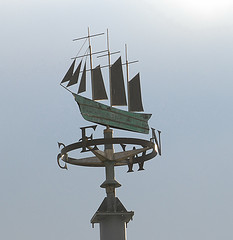 Most PPC (pay-per-click) software is focused on helping advertisers manage bids on keywords, WordStream’s new AdWords Quality Score Management Tools are designed to boost quality scores in Google AdWords campaigns while driving costs down. These tools are now incorporated into WordStream’s flagship PPC product and should make it much easier for AdWords advertisers to develop more cost-efficient and effective campaigns.
Most PPC (pay-per-click) software is focused on helping advertisers manage bids on keywords, WordStream’s new AdWords Quality Score Management Tools are designed to boost quality scores in Google AdWords campaigns while driving costs down. These tools are now incorporated into WordStream’s flagship PPC product and should make it much easier for AdWords advertisers to develop more cost-efficient and effective campaigns.
[Read more…] about WordStream Helps Advertisers Generate More Qualified Traffic with New Tools
search engine marketing
Important Metrics for Your Pay-Per-Click Campaign
 Many businesses run pay-per-click (PPC) campaigns in order to increase traffic and sales to to their websites. However, many are not looking at how effective those campaigns are. I’ve run across several websites which thought they were doing ok with their PPC campaigns, but upon closer examination, we found they were spending more than they were getting out of the advertising.
Many businesses run pay-per-click (PPC) campaigns in order to increase traffic and sales to to their websites. However, many are not looking at how effective those campaigns are. I’ve run across several websites which thought they were doing ok with their PPC campaigns, but upon closer examination, we found they were spending more than they were getting out of the advertising.
Conversions
A conversion is when an action that you’re advertising is actually taken on your website. So if you’re advertising a product, it’s when someone actually purchases that product. This is usually tracked by putting a script tag from your PPC ad on your thank you page that happens after a purchase is made. Conversions are the whole reason you’re advertising, so they are very important to track.
Cost Per Conversion
For the number of conversions you get in any time period, how much are you spending on advertising? Taking the total amount spent and dividing it by the number of conversions will give you how much you’re spending per conversion – or cost per conversion. This metric is extremely important for knowing whether you’re spending too much on your advertising for what you’re getting out of it. If this number is too high, it’s time to look at optimizing your ads, website and landing pages. (As an aside, sometimes people will click on an ad and purchase a product much later – days or weeks – this is not tracked with this metric).
Conversion Rate
How many clicks do you have to get before someone purchases from you? How effective is the path the visitor takes to purchase the product? The number of conversions divided by the number of ad clicks gives you the conversion rate.
Clicks
How many times people are clicking on your ad- how much interest and traffic it is generating. If you are using advertising for branding or just for traffic, and are not tracking conversions or sales, this is an important metric.
Cost Per Click
How much each click costs – or how much you’re paying for each person that your ad brings to your website. Taking the total amount spent and dividing it by the number of clicks will give you this metric.
Click Through Rate (CTR)
How effective your ad is – in message and targeting (keywords, placements, etc.) Measured by the number of clicks on an ad divided by the number of impressions (number of times it is shown). A low CTR can indicate poor messaging or targeting (keywords, placements, etc.).
(photo by The Ancient Brit @ Flickr CC)
Technorati tags: pay-per-click advertising, internet advertising, internet marketing, search engine marketing, business, SEM, SEO, PPC, marketing
Liked this post? Consider subscribing to our RSS feed or our weekly newsletter.
Is your brand 'Google Safe'?

There is a term we used to throw around the publishing desks back in the day. If we had a new branded product or publication we wanted to create, the first bullet point on the ToDo list was to find out if the name it was ‘Google Safe’. For us, ‘Google Safe’ meant the term or name or phrase or tagline was light on targeted search results in Google and was available for someone to make their own. I use the quotes there because, unaware at the time, Google was branding its own line of services and calling them Google Safe Browsing (who knew). The term stuck in my head since and I’m not sure what the the kids are calling it today but at least the concept is alive and well. The CEO of a web startup that will intentionally mispell an english word as their brand to find a niche in a crowded search market, that’s a woman who enjoys the path less chosen.
Good online branding is getting difficult. It has to be memorable, short, representative if possible, and it has to be somewhat available on Google. I was sitting down just today thinking of a good product name when I came up with some guidelines that at least helped.
- Pick one word that speaks to your product, lets say Community, and another word that neither adds nor distracts from the first word. CommunityOne, CommunityPrime, CommunityNow
- Prefix words like colors are easy to remember and can give your name a little separation from the pack. Sure you could call your wireless mini networking technology ‘tooth’ but ‘Bluetooth’ is so much cooler and more unique.
- Locations make good Google Safe additions to names. Your town, your county, your street, your state can all help you find a unique name for your business that is easy to remember and representative as well
- Numbers are popular with the online community. 37siganls, 43folders, 30helens.
- So are strange animal combinations. RazorFrog, GlassFish, FireFox. Entire product releases for Ubuntu are renamed with an allerating combination of Adjective and Animal name: Gutsy Gibbon, Intrepid Ibex, Hardy Heron.
- Of course, would be remise if I didn’t mention the trend Apple foisted upon us. Take a word, slap on a lower case letter in front, surround with rounded corners. iPod, iTouch, iMac, iGotNothing
I’m sure you can come up with better suggestions of how to pick the next great name.
Photo attributed to audreyjm529
Technorati tags: strategy, marketing, google, google safe, search engine optimization, seo, search engine marketing, sem